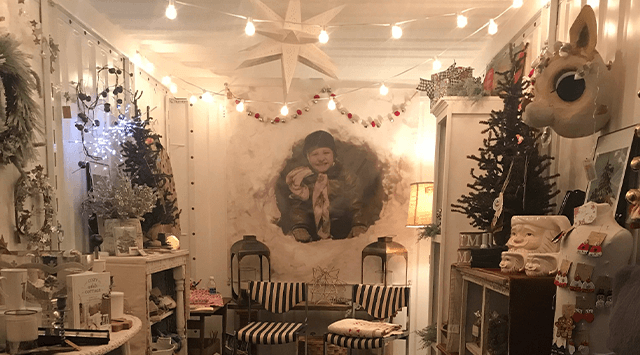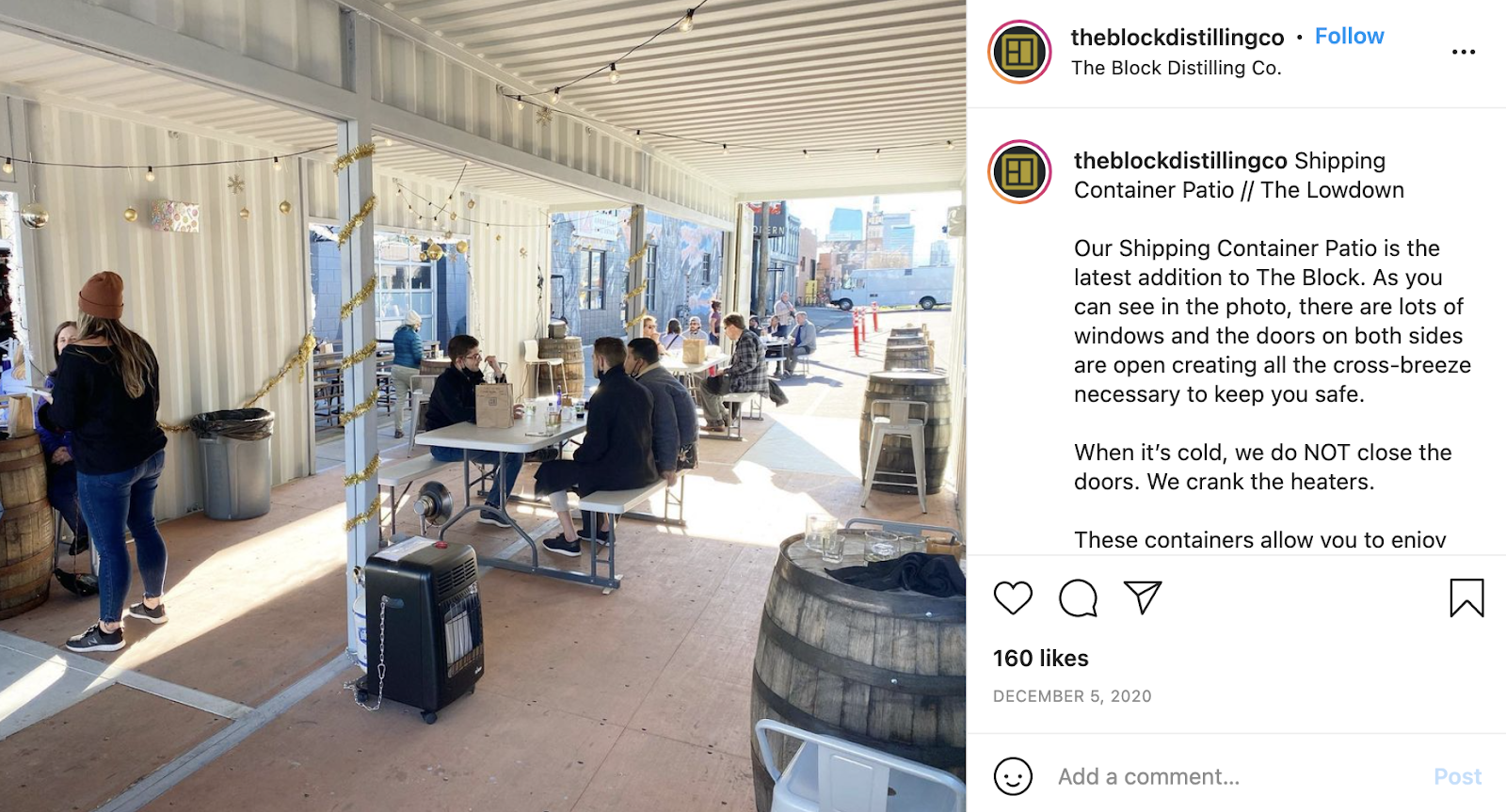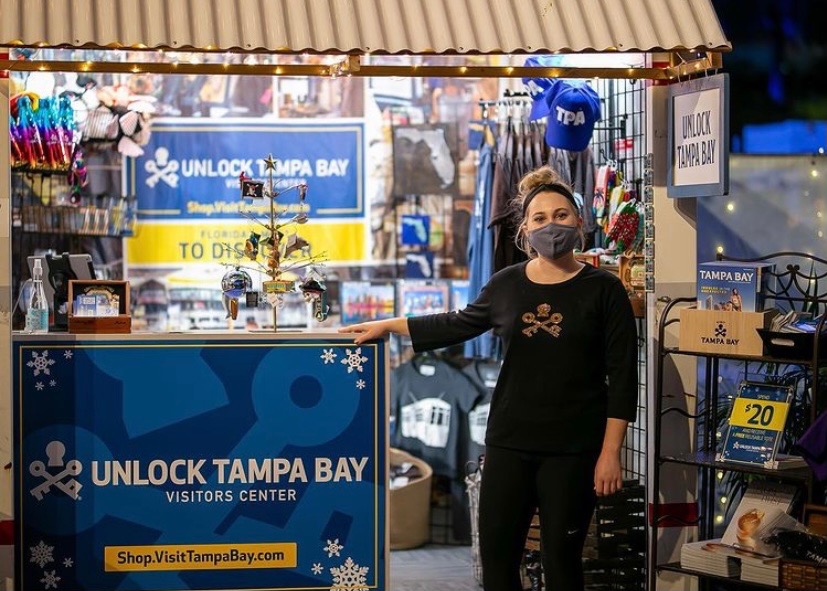
A Step-by-Step Guide to Outdoor Pop-Up Shops: Ideas and Tips for Retailers
Pop-up shops have become extremely popular over the last decade. They got their start as a way for e-commerce brands to test out brick-and-mortar opportunities, but because of their low overhead cost and minimal risk, it didn’t take long for the idea to become a common strategy used by many retailers to test out new experiences and locations.
While there are many locations to host a pop-up shop (like inside a vacant storefront), one of the easiest ways is to set one up in an outdoor area. Parks, waterfronts, parking lots, and other public outdoor urban spaces are just a few examples of what’s possible.
If you’re interested in learning how to host a pop-up shop event, keep reading. This post outlines the steps you should take to ensure your initiatives are successful.
What is a Pop-up Shop?
Like the name implies, a pop-up shop or pop-up store is a temporary retail space. This can be something as simple as a table at a community art fair or something that looks like a normal retail operation, as many pop-up shops enter into a short-term commercial lease for their space. While the look may differ depending on size and scale, what unifies all pop-up shops is that they won’t be open indefinitely.
Step 1: Determine Your Objectives
When planning any kind of pop-up shop, you first need to determine your goal. This will help determine whether or not a pop-up shop is a smart investment.
Some reasons why retailers set up a pop-up shop include:
- Creating new customer relationships: What business isn’t looking for new customers? Pop-up shops are a great way to introduce people to your brand in an intimate and friendly way. Even if you’re primarily interested in running an online business, connecting with your customer base in person is a great way to show them the level of service they’ll receive when working with you.
- Expanding into a new city: Maybe you’re wondering if your suburban business is ready to work its way into the neighboring city. This is a fantastic opportunity for testing the water and seeing if your small business can cater to the two areas.
- Promoting a new product or a new business venture: Your friends keep telling you how amazing your homemade bread and pastries are and that people would definitely buy them, but you’re not sure if that will be a profitable business. Use a pop-up shop or rent a table to take your sweet treats on a test run before making a bigger leap of faith.
- Increasing sales: If you have product that you’re unsure how to offload, a pop-up shop provides the short timeline you need to get that excess inventory off the books.

You also need to spend some time defining your ideal consumer, or target audience. For instance, testing new merchandise will mean you need to find a neighborhood or city where a high density of your target market lives.
Unsure how to figure out who that target audience is? Here are a few questions you can ask yourself that may help you find the answer:
- What problem does my product solve?
- Who is most likely to have that problem?
- Where does that person typically live?
- What hobbies do they have?
- Where do they like to shop?
- What motivates them to make a purchase?
Your objectives may align best with setting up a table at a local farmer’s market. Alternatively, it may make the most sense to rent a shipping container and set up something with a sturdier and semi-permanent structure.
Retail boutique owner Bev Norris, for example, needed to rapidly set up a pop-up shop before the holidays because her brick-and-mortar store had burned down. She required a location that would provide her customers with the professional feel they associated with her indoor shop.
Bev chose to use a 16-foot all-steel commercial container from PODS to create an outdoor pop-up shop with an indoor feel for the event.
Step 2: Set a Realistic Budget
When it comes to planning your outdoor pop-up shop, creating a budget is crucial. You’ll need to budget for:
- Your location, which will include both the cost of the actual “store” (whether that be a tent, a trailer, a shipping container, etc.), as well as the cost for any permits or licenses you’ll require for setting up shop on a certain piece of land
- Utilities such as power and internet
- Salaries for your staff if you’ll be adding anyone to man the pop-up shop
- Additional technology you may need for your tech stack, like a mobile POS
- Insurance (which may or may not be necessary depending on your pop-up shop structure)
- Special marketing efforts you’ll put in for the shop specifically, such as paid digital ads or flyers
- Decor or fixtures (for outdoor pop-up shops, this can include things like fans or space heaters to make your booth more comfortable)
How much does it cost to set up a pop-up shop?
Storefront and the University of South Carolina College of Retail asked 600 global retailers about their experience with pop-up stores. According to their findings, around 44 percent spent less than $5,000 on the pop-up shop space, and 16.7 percent spent between $5,000 and $10,000. Of the people they surveyed, 80 percent called the pop-up shop experience a successful one.

Step 3: Location, Location, Location
The perfect location will depend on a number of different factors: your goals, target audience, budget, and what’s actually available.
If you have a very specific audience in mind, you may need to find a spot in a neighborhood where you can find your target demographic.
Get Joy, a dog food brand, wanted to target young professionals who own and spoil their dogs. As an alternative to a large pop-up shop space, the brand decided to set up a pop-up kiosk in the parking lot of a brewery in Nantucket at a popular spot for dog owners.
Spend some time getting to know the city or town you want to launch a pop-up shop or experience in. Get a feel for what places are highly trafficked and by whom. Look into the permits required to set up in different places.
Spend some time getting to know the city or town in which you want to launch a pop-up shop or experience. Get a feel for what places are highly trafficked and by whom. Look into the permits required to set up in different places.
Step 4: Set Up Your Pop-up Store
Once you’ve determined where your store is going to go and the general structure (whether it be a tent or a shipping container), it’s time to set up your store. Ask yourself how you want your pop-up shop to look and feel – design is a crucial element in attracting the right customers. Think about what would appeal to your target audience.
What items are needed for a pop-up shop?
Once you have a design idea, you’ll need to ensure you have the right structural materials and tools to create your pop-up shop. This could be:
- A tent canopy
- Stakes
- Tables and tablecloths
- Shelving, rolling racks or display cases
- Merchandise tags
- A laptop and payment system
- Checkout supplies, like shopping bags and tissue paper
- Flooring (you may want to lay a stylish carpet over vinyl flooring for a more polished and elegant aesthetic)
- Decor items
- Eye-catching signage, like a blackboard, dry-erase board, or easel
If you’re looking for an easier way to “create” your pop-up store’s structure, you can switch the tent canopy, stakes, and flooring for a PODS container.

If you’re setting up a table at a local market, this may well require very little effort — just put up the table, set up your merchandise, and then sit back. But, if you’re working with something more complex, it may take a bigger time and financial investment. For instance, Block Distilling Company created an entirely outdoor restaurant using shipping containers during the pandemic.
The shipping container setup cost the distillery around $30,000 and took around four hours to put together.
Step 5: Promote Your Pop-up Shop to Drive Awareness
The next step to going live with your pop-up shop is to promote it for the objective of driving foot traffic. The best digital methods include location-based advertising on social media as well as email and social blasts announcing it to your audience. If you’re going the digital route and don’t have a website yet, this may be an opportune time to build one or at least make a social media business page. If people are hearing about your business online, they may be searching the name to get more information.
To give your opening a personal touch, send a pop up shop invitation to your existing customer list or, if you don’t have one of those yet, to friends and family. Also, if you are partnering with a local business (such as by using their parking lot, etc.), you should see if you can have them promote your temporary location to their audiences as well.
If there are coffee shops, cafes, or other businesses in the area where your target audience is likely to frequent, ask them if you can put some flyers up in their store advertising your pop-up shop. As long as you’re not in direct competition with their business, you should be okay.
Step 6: Make the Most of Your In-store Time
Once you officially open your pop-up shop, you’ll (hopefully) be busy making sales. While this is clearly beneficial, you may want to implement some other strategies to maximize your time and profits.
- Offer samples or a special discount: If there’s a certain product you’d like to promote, offer some free samples or a special discount on the item. This is a great way to draw attention to the product.
- Have a “final day” sale: If your pop-up shop is open for multiple days, use the last day as your half-off sale. This way, you don’t have to close the pop-up shop and figure out what to do with excess inventory. If your pop-up shop is one day only, you could have a fire sale for the last two hours.
- Collect contact information: Keep the sale cycle going by asking your customers to provide their email address during checkout. This way, you’re not just making a one-time sale, you’re building relationships that may result in multiple sales down the road.
Speaking of collecting email addresses, if you’re not using a Customer Relationship Management (CRM) tool yet, you may want to consider investing in one. CRM software stores all of your customers’ information, like email addresses and transactions, into an organized record. Having this software makes it easier to communicate with customers, get insights into their buying habits, and forecast sales more accurately.
Step 7: Measure Your Results
To add one more thing to your to-do list once you open your pop-up shop, it’s imperative that you measure its results.
One of the simplest things to measure is how many customers you’re serving. You’ll know how many sales you made, but knowing how many customers visited your stores is important information, too, because it lets you know how many people took an interest in your brand. Plus, all it takes is one inexpensive hand counter to give you this data.
Other questions to consider:
- How many sales are you making?
- What was my pop-up shop’s busiest time?
- What section of my pop-up shop was most popular?
- What’s your pop-up shop’s average transaction value (ATV) — is it higher or lower than your other channels?
The answer to all these questions will help you determine if you’ve achieved your goal and how to – or if you should – consider running another pop-up shop in the future.
Step 8: Follow Up with Customer Post-pop-up
Pop-up shops may be temporary, but they can have a longer-lasting impact when done correctly. Remember those email addresses you collected from customers? Remember that CRM system we recommended? This is when you get to put both of those to good use.
Create an email campaign for collecting feedback after your pop-up store commences its run. This doesn’t have to be anything lengthy or in-depth – in fact, emails like this are better when they’re short and sweet or else the customer will feel like they’re not getting anything out of the exchange.
If possible, do a gift card drawing or offer an exclusive discount for everyone who completes the survey. Not only will you get some valuable input about your pop-up shop and how you can make meaningful improvements for future iterations, you’re garnering more attention for your products and/or services.
Outdoor Pop-Up Shop Ideas With PODS
Looking to set up a pop-up shop of your own? Our shipping containers are durable and easy to set up for temporary retail needs. PODS containers are portable and can be placed outdoors with little clearance area, making them ideal for tight spaces and urban settings.

With a PODS container as a structure for your outdoor pop-ups, you can effectively showcase merchandise and create compelling brand experiences. But keep in mind that the containers can also be used for on-site inventory storage if you're tight on space at your pop-up shop.
Curious to learn more? Discover how we can help bring your pop-up shop to life by learning more about the pop-up retail solutions we offer.
[maxbutton id="3"]
RELATED ARTICLE: Best Practices for Running a Successful Pop-up Booth at a Market
Comments
Leave a Comment
Your email address will not be published. Required fields are marked *
